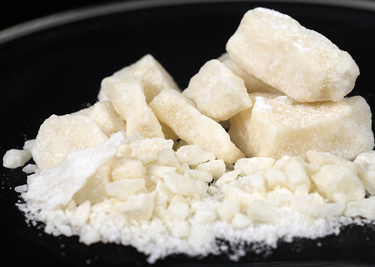High court
 tries to crack cocaine case.
tries to crack cocaine case.
By Dana Milbank. Monday, February 28, 2011; 8:00 PM.
The Supreme Court is earning its reputation as the high court.
The robed ones have deliberated over cocaine at least half a dozen times in recent years, taking up the drug in some form in each of the past four years. On Monday, the justices took another hit – and this one was particularly mind-blowing.
For one thing, the law they were interpreting – the sentencing disparity between crack and powder cocaine – was changed by Congress last year, making the argument largely inconsequential.
For another, the argument hinged on chemical properties of cocaine derivatives – a technical discussion for which law school did not quite prepare the justices.
“Could you grind it up so that it’s not rock-like anymore, so it’s like a powder, and smoke it after it’s in that form?” inquired Justice Samuel Alito.
“Can you get cocaine into a rock form without using a base?” Justice Sonia Sotomayor wanted to know.
Justice Anthony Kennedy had a question about the age and sun exposure of the coca leaf. Justice Elena Kagan invoked Richard Pryor’s freebasing accident. Alito, who showed off by reciting the chemical formula for cocaine – C17H21NO4 – sought information on how many Americans smoke coca paste.
Justice Stephen Breyer had even less refined cocaine knowledge. “People sniff it often, I guess, if it’s a salt, and that’s bad,” he said. “And then there’s a kind that’s worse. That’s freebase or crack.”
From the looks of them, the lawyers – Andrew Pincus, son of The Washington Post’s Walter Pincus, and Justice Department lawyer Nicole Saharsky – had as little firsthand experience with the substance as their questioners. But they shared what they could about rock and snow.
Breyer told Saharsky it was “very interesting” that she described coca paste as “being a yellow substance that came directly from grinding up leaves, something like that.”
“The paste doesn’t have to be yellow, just like crack doesn’t have to be white or off-white,” Saharsky explained. “There was evidence that a few years ago there were folks in Ohio that were coloring crack green for St. Patrick’s Day.”
The justices smiled at this clever marketing technique. Saharsky further explained that the drug has been described as “a brown, soft, mushy, wet substance” and a “wet, gooey, cream-colored substance.”
“What you end up with,” Alito inquired, “is a gummy, yellowish solid called coca paste – that’s correct?”
“It can also be dried and smoked,” Saharsky added. “It has been dried in South America, so it’s not always wet.”
Symptoms of a cocaine high include talkativeness, hyperactivity and a feeling of superiority, often followed by lethargy during the crash.
By coincidence, these were the same traits on display in the chamber. Talkativeness? Sotomayor. Hyperactivity? Breyer. Lethargy? Clarence Thomas. Feeling of superiority? Antonin Scalia.
“You’re urging upon us a definition that neither is the definition of crack nor is the chemical definition of cocaine base,” Scalia snorted. “It’s neither fish nor fowl.”
Pincus provided a culinary response, saying the “question that we’re debating is whether the use of baking soda is essential.”
“It’s essential to crack,” Scalia informed counsel. But even the all-knowing Scalia became muddled as he inhaled deeply of the drug discussion.
“Let’s assume that the government’s right,” he told Pincus. “Or that you’re right. And that it’s – no, let’s assume the government’s right, and it’s – no, you say it’s base. And let’s assume you’re right.”
Saharsky lectured her slow pupils. “Optical isomers are nonsuperimposable mirror images, like right- and left-handed versions of the same molecule,” she informed them, and “geometric isomers . . . are based on spatial arrangements where a certain part of the molecule is pushed out or pushed up axially or equatorially.”
“They’re all very exotic,” Justice Ruth Ginsburg observed.
So the justices tried to simplify. “Cocaine base means the same exact same thing as cocaine, because cocaine is a base,” Kagan thought aloud. “It’s like referring to an apple by saying ‘apple fruit’ or referring to a poodle by saying ‘poodle dog.’ “
Breyer later declared that “I’m not going to repeat the same stupid joke – poodles and fruits.” Kagan didn’t join in the laughter.
As an alternative metaphor, Breyer said that the drug law reads to him like a riddle: “Who’s your father’s son who’s not your brother?”
Clearly the high court needs to take a powder.
danamilbank@washpost.com
